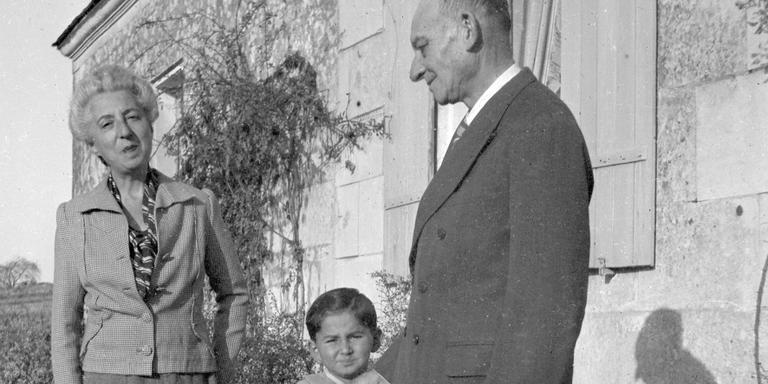


The French village with collective amnesia about the Occupation
InvestigationIn the peaceful village of Le Coudray-Macouard in western France, the story of a local Jewish couple who died after being deported to Auschwitz remains taboo. Some residents remember how Lucien and Jeanne Haas' country house was despoiled by a local farmer.
"Jeanne, 58, and Lucien Haas, 67, perished at Auschwitz in 1943. They lived their last years of freedom at La Sanzie. 17-06-2001." Five lines engraved on a marble plaque, affixed in the summer of 2001 to the gable end of a tufa stone farmhouse, the aforenamed La Sanzie, in Le Coudray-Macouard, a wine-producing village in western France. One hundred and eleven golden characters to tell the story of a couple's destiny – not nearly enough to express the horror of their fate, or do justice to their memory. No one comes here to make speeches or lay a tricolor beribboned bouquet. It is not a place where people gather on official days of commemoration. The small plaque on the Route de Bron seems to have been forgotten.
"The Haas family were two Jews deported by the Germans," local residents simply say when asked. The house's current owner, who has lived in Le Coudray-Macouard since 2018, admitted he "didn't bother to do any research," but said he'd be "delighted to find out more, of course".
In the 1940s, the village had 559 inhabitants. Today, there are 961. The pre-war generation is dying out. There are many new arrivals – neo-rurals, as they say. They haven't yet made the history of this village their own. Mayor Gérard Police, 67, elected in 2020, a former oil rig worker from Africa, moved here in 2007. "I didn't even know there was a plaque," he said. "My predecessors didn't tell me anything about it."
In her book Le Coudray-Macouard (Hérault éditions, 1991), Jacqueline Bernard, mayor from 1977 to 1995, keeps it short: "During the Occupation, on September 7, 1943, a Jewish couple, Lucien Haas and his wife, were arrested, and there has been no news of them since." Her successor, Yves Vigouroux (1995-2014), refused to allow the plaque to be placed on the war memorial, on the grounds that this honor is reserved "for those who fell for France". In 2019, the municipality, then headed by Françoise Auvinet, had to name a road created between Sanzie and the school. One councillor proposed "Rue Jeanne et Lucien Haas," others "Rue des Ecoliers" (schoolchildren). There was a vote: nine for Rue des Ecoliers, one for Rue Jeanne et Lucien Haas and one abstention. In France, there are more than 1,000 thoroughfares dedicated to schoolchildren.
Who were the Haas family? What were "their last years of freedom"? Why did this plaque appear 58 years after they were killed? What guilt lies behind the silence around their story? How many secrets? And who is left to unravel them?
On the website of the organization Anonymes, Justes et Persécutés durant la Période Nazie dans les Communes de France (Anonymous, Righteous and Persecuted during the Nazi Period in the Communes of France, AJPN), the page "Le Coudray-Macouard en 1939-1945" paves the way: "The Haas family – Lucien, born on 30/1/1876 in Paris, a lawyer, retired to Le Coudray-Macouard with his wife Jeanne, née Weill, born on 26-07-1885. Their son was a prisoner of war in Germany. They were arrested as Jews in September 1942 and interned at Drancy. After 10 months' internment, they were deported without return from Drancy to Auschwitz on 31-07-1943 by convoy no. 58."
You have 85.68% of this article left to read. The rest is for subscribers only.
